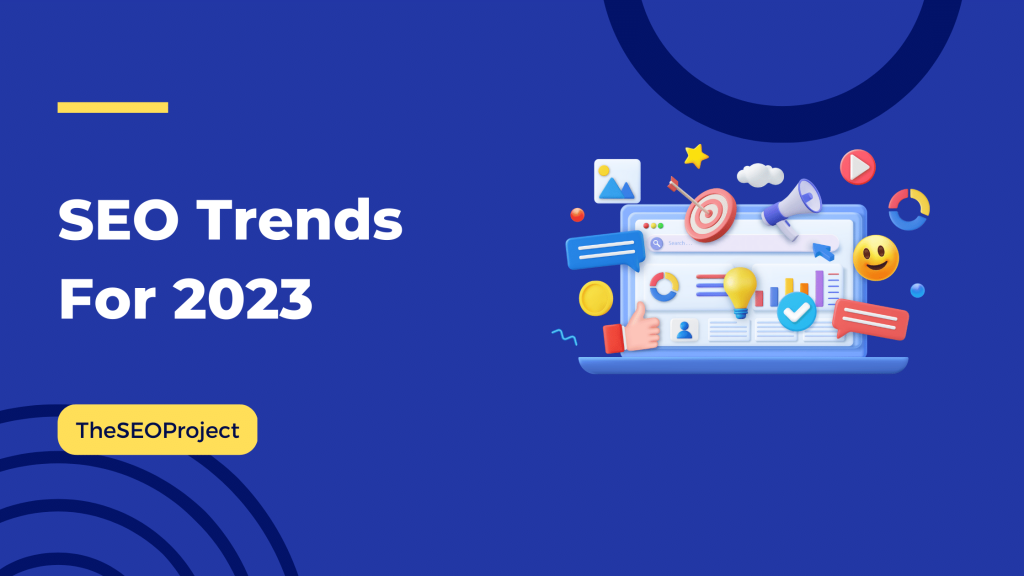In today’s digital landscape, search engine optimization (SEO) plays a crucial role in driving organic traffic and generating leads for businesses. While SEO tactics can vary between B2B and B2C sectors, understanding the unique considerations of B2B SEO is essential for success.
In this article, we will dive deep into the world of B2B SEO strategies, providing you with valuable insights and practical tips to optimize your website and increase your online visibility. From keyword research to content creation and link building, we’ll cover all the key aspects to help you develop an effective B2B SEO strategy that drives results.
So, let’s get started and unlock the power of B2B SEO!
What is B2B SEO?
B2B (Business-to-Business) SEO is the practice of optimizing a website or online presence for search engines in order to increase the visibility and ranking of a business that sells products or services to other businesses.
B2B SEO can include various strategies such as keyword research, on-page optimization, link building, and content marketing. The ultimate goal is to drive more targeted traffic to the website, which can lead to increased sales and revenue for the business.
Differences Between B2B and B2C SEO
B2C (Business-to-Consumer) SEO is the process of optimizing a website to improve its visibility and ranking on search engines for consumers searching for products or services. It involves optimizing content, keywords, meta tags, and other factors to attract relevant traffic and improve conversion rates. However, B2B and B2C SEO strategies differ in several ways.

1. Target Audience
One of the most significant differences between both SEO is the target audience. B2B businesses usually target other businesses, while B2C businesses target individual consumers. As a result, the keywords and search terms used in B2B SEO tend to be more industry-specific, technical, and longer-tail. B2C SEO keywords and search terms tend to be more consumer-oriented.
2. Content
Another significant difference between B2B and B2C SEO is the type of content used. B2B SEO content is usually more technical, detailed, and informative, aimed at educating other businesses and establishing thought leadership. B2C SEO content is more visual, emotional, and persuasive, aimed at capturing the attention and interest of individual consumers.
3. Conversion Funnel
The conversion funnel for B2B and B2C businesses also differs. In B2B SEO, the conversion process is often more complex and longer, with multiple decision-makers involved in the purchasing process. B2C SEO, however, focuses more on immediate conversions, with shorter and simpler decision-making processes.
4. Link Building
Link-building strategies for B2B and B2C SEO also differ. B2B companies often focus on building relationships with other businesses, industry influencers, and thought leaders. B2C companies, however, often prioritize building relationships with bloggers, social media influencers, and consumer review sites.

5. Keyword Competition
Keyword competition is another area where B2B and B2C SEO differ. B2B keywords are often less competitive because the audience is more targeted and niche. On the other hand, B2C keywords are often more competitive because the audience is broader, and there are more businesses competing for those keywords.
6. Keyword Intent
The intent behind B2B and B2C keywords also varies. B2B keywords are usually related to problem-solving, research, or decision-making. B2C keywords are more likely to be related to shopping, entertainment, or socializing.
How to Create B2B SEO Strategies?
Developing a successful B2B SEO strategy requires careful planning, execution, and continuous monitoring. Here, we’ll outline the step-by-step process to help you create a winning B2B SEO strategy.
1. Define Your B2B SEO Goals
Before diving into the world of B2B SEO, it’s essential to clearly define your goals. Ask yourself:
- What do you want to achieve with your SEO efforts?
- Are you looking to increase website traffic, generate leads, or improve brand visibility?
- What are the key performance indicators (KPIs) you will use to measure success?
Defining your goals will not only provide direction but also help you track progress and make data-driven decisions throughout your SEO journey.
2. Conduct Comprehensive Keyword Research
Keyword research forms the basis of any SEO tactic. It involves identifying the key terms and phrases your audience is using to search for products or services in your industry. By understanding your audience’s search intent, you can optimize your website to appear in relevant search results.

To conduct effective keyword research:
- Start with a seed keyword: Begin by brainstorming a list of seed keywords related to your business and industry. For example, if you’re a software development company, your seed keyword could be “enterprise software solutions.” Semrush is a great keyword research tool that will enable you to find good quality keywords in just a few clicks.
- Use keyword research tools: Leverage powerful KW research tools like Semrush, Google Keyword Planner, or Moz Keyword Explorer to expand your keyword list and uncover new opportunities. You can even search keywords on ChatGPT These tools provide valuable insights into search volume, competition, and related keywords.
- Analyze competitor keywords: Study the keywords your competitors are targeting and identify gaps or opportunities you can capitalize on. Tools like SEMrush or SpyFu can help you gain valuable competitor insights.
- Consider long-tail keywords: While short, generic keywords may have high search volumes, they also come with intense competition. Long-tail keywords, on the other hand, are more specific and can help you target a more focused audience.
Remember, effective keyword research is an ongoing process. Regularly monitor keyword performance and adapt your strategy as trends and search behaviors evolve.
3. Optimize On-Page Elements
On-page optimization refers to the process of optimizing the elements on your website to improve its visibility in search results. Let’s explore some key on-page optimization techniques:
1. Meta Titles and Descriptions:
Meta titles and descriptions are HTML tags that provide concise summaries of your web page content. They appear in SERPs and influence click-through rates. Include your target keywords naturally in meta titles and descriptions while enticing users to click.
2. Header Tags :
Header tags help structure your content and provide hierarchical information to search engines. The H1 tag should contain your target keyword and indicate the main topic of the page. Use H2, H3, and subsequent header tags to organize subtopics and improve readability.
3. URL Structure:
Create user-friendly URLs that include relevant keywords and accurately reflect the page’s content. Avoid lengthy URLs with numbers and special characters, as they can be confusing to both search engines and users.
4. Keyword-Optimized Content:
Produce high-quality, keyword-optimized content that aligns with your target audience’s needs and interests. Use your primary and related keywords naturally throughout your content, while maintaining readability and avoiding keyword stuffing.
5. Image Optimization:
Images play a major role in enhancing customers’ experience and engagement. You can optimize images in various ways, such as compressing them to reduce file size without compromising quality. Additionally, you can include descriptive alt tags that incorporate relevant keywords to improve image visibility in search results.
6. User Experience (UX):
Search engines focus on websites that tend to offer a positive customer experience. So make sure your site is mobile-friendly, provides intuitive navigation, and loads quickly. Engage users with valuable, well-structured content that keeps them on your site longer.
4. Craft High-Quality Content
Content is king in the realm of SEO. Creating informative, engaging, and relevant content is vital for attracting and retaining visitors, establishing thought leadership, and generating backlinks. Consider the following content creation strategies:

1. Blogging:
Maintain an active blog that addresses industry-related topics, pain points, and emerging trends. Consistently publish high-quality, keyword-rich blog posts to demonstrate your expertise and improve organic rankings.
2. E-Books and Whitepapers:
Offer valuable downloadable resources like e-books, whitepapers, or case studies. By providing in-depth information and actionable insights, you can capture leads and nurture prospects.
3. Video Content:
Leverage the power of video content to engage your B2B audience. Create instructional videos, product demos, or industry insights to captivate viewers and increase brand awareness.
4. Guest Blogging:
Collaborate with industry influencers and authoritative websites to publish guest blog posts. This not only exposes your brand to new audiences but also builds valuable backlinks that boost your website’s authority.
5. Build a Strong Link Profile
Link building is an integral part of any SEO strategy. When reputable websites link back to your content, search engines perceive your website as trustworthy and authoritative. Here are some effective link-building tactics for B2B SEO:
1. Outreach and Relationship Building:
Identify influential industry blogs, publications, or websites and reach out to them with personalized pitches or guest post proposals. Building relationships with industry peers can lead to valuable backlink opportunities.
2. Content Syndication:
Syndicate your high-quality content on reputable platforms like LinkedIn Pulse, Medium, or industry-specific forums. This can expose your content to a wider audience and attract backlinks.
3. Social Media Promotion:
Promote your content on social media platforms to encourage sharing and engagement. Engage with your audience and industry influencers to build relationships that may result in valuable backlinks.

Conclusion– B2B SEO Strategies
Creating effective B2B SEO strategies requires a combination of technical expertise, in-depth keyword research, high-quality content creation, and strategic link building. By following the steps outlined in this guide, you can optimize your B2B website, increase online visibility, and generate valuable leads.
Remember, SEO is an ongoing process, and staying up to date with search engine algorithms and specific trends is crucial. Continuously analyze data, adapt your strategies, and test new approaches to stay ahead in the ever-evolving world of B2B SEO.
Related Reads:
FAQs– B2B SEO Strategies
While there may be some overlap, B2C and B2B SEO, strategies often differ due to variations in target audience, buying cycles, and content requirements. It’s recommended to tailor your SEO approach specifically for your B2B audience.
Website speed is crucial for both user experience and search engine rankings. Slow-loading websites can negatively impact user engagement and rankings. Optimize your website’s performance by compressing images, using caching techniques, and investing in reliable hosting.
Both organic SEO and paid advertising have their merits. Organic SEO provides sustainable, long-term results, while paid advertising can generate immediate traffic and leads. A balanced approach that combines both strategies often yields the best results.
Hiring an SEO agency can provide valuable expertise, save time, and deliver results. However, it’s not mandatory. With a solid understanding of SEO principles and consistent effort, you can develop and execute effective B2B SEO strategies on your own.
Key metrics to monitor include organic traffic, keyword rankings, conversion rates, backlink profile, and engagement metrics like time on page and bounce rate. These metrics provide insights into the effectiveness of your B2B SEO strategies.


